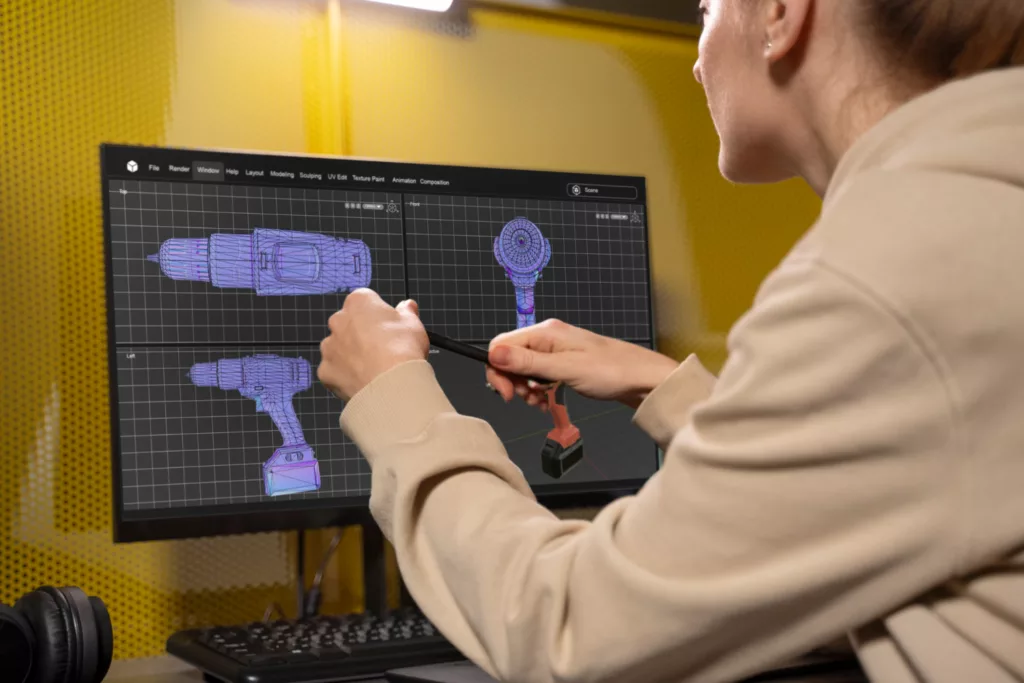Artificial Intelligence (AI) has infiltrated nearly every aspect of modern life, and the field of design is no exception. As AI technology continues to advance, it is reshaping the creative landscape, offering designers new tools, insights, and possibilities. In this article, we will explore the multifaceted role of AI in design, from its role as a design assistant to its influence on emerging trends in architecture, packaging, typography, and beyond.
AI as a Design Assistant

Streamlining the Creative Process
AI is increasingly being integrated into design software to assist designers in various tasks. From suggesting color palettes and fonts to automating repetitive design elements, AI streamlines the creative process, allowing designers to focus on the conceptualization and execution of their ideas.
Improved User Experience
AI-powered design assistants often adapt to the user’s preferences and behavior, providing personalized suggestions and recommendations. This enhanced user experience fosters a more efficient and enjoyable design journey.
AI Trends in Architecture

Generative Design
Generative design, a subset of AI in architecture, employs algorithms to create and explore numerous design iterations based on specified parameters. This approach allows architects to discover innovative solutions and optimize designs for various criteria, such as sustainability, structural integrity, and aesthetics.
Energy Efficiency and Sustainability
AI plays a vital role in making buildings more energy-efficient and sustainable. Machine learning algorithms can analyze vast amounts of data, predicting energy usage patterns and recommending design modifications to reduce environmental impact.
AI Trends in Packaging Design
Personalization at Scale
AI facilitates personalized packaging design, enabling companies to create unique packaging for each customer without the need for manual intervention. From adding personalized messages to customizing artwork, AI-driven solutions enhance the brand-consumer connection.
Enhanced Packaging Usability
By analyzing user behavior and feedback, AI can optimize packaging design for better usability. From easy-open features to eco-friendly materials, AI ensures that packaging aligns with consumer needs and preferences.
AI Trends in Typography
Custom Font Generation
AI-driven tools are revolutionizing typography by automating font generation. Designers can input specific design preferences, and AI algorithms create custom fonts that align perfectly with the brand’s visual identity.
Font Pairing and Recommendations
Pairing fonts effectively is crucial for design coherence. AI helps designers find suitable font combinations by analyzing font attributes and suggesting complementary pairings.
AI and the Future of Design

Expanding Creative Horizons
As AI continues to evolve, its role in design will expand further. From 3D modeling and virtual reality design to AI-generated art, the creative horizons are boundless, offering designers unparalleled possibilities.
Ethical and Responsible Design
While AI empowers designers, it also raises important ethical considerations. Designers must ensure responsible AI usage, avoiding biases and promoting inclusivity in design decisions.
Conclusion
AI has become a powerful ally in the design realm, transforming the creative process, and inspiring new trends across various disciplines. From architecture to packaging design and typography, AI’s impact is evident in its ability to streamline workflows, personalize experiences, and push creative boundaries. As designers continue to embrace AI technology responsibly, they open the door to a future where innovation and human ingenuity coexist harmoniously, shaping a more dynamic and visually captivating world.
Frequently Asked Questions
Answer: AI can help architects and designers optimize energy usage, reduce waste in packaging design, and promote sustainable materials, all contributing to more eco-friendly and responsible design practices.
Answer: Yes, AI-generated designs can be copyrighted, but the legalities surrounding AI-generated content may vary depending on the jurisdiction.
Answer: Challenges may include data privacy concerns, potential biases in AI algorithms, and the need for designers to adapt to new technology.
Answer: AI-powered design tools are accessible to both large design firms and individual designers, democratizing the creative process and making it more inclusive.
Answer: AI can enhance design processes and provide valuable insights, but it cannot replace the unique creative vision and emotional intelligence that human designers bring to the table.
